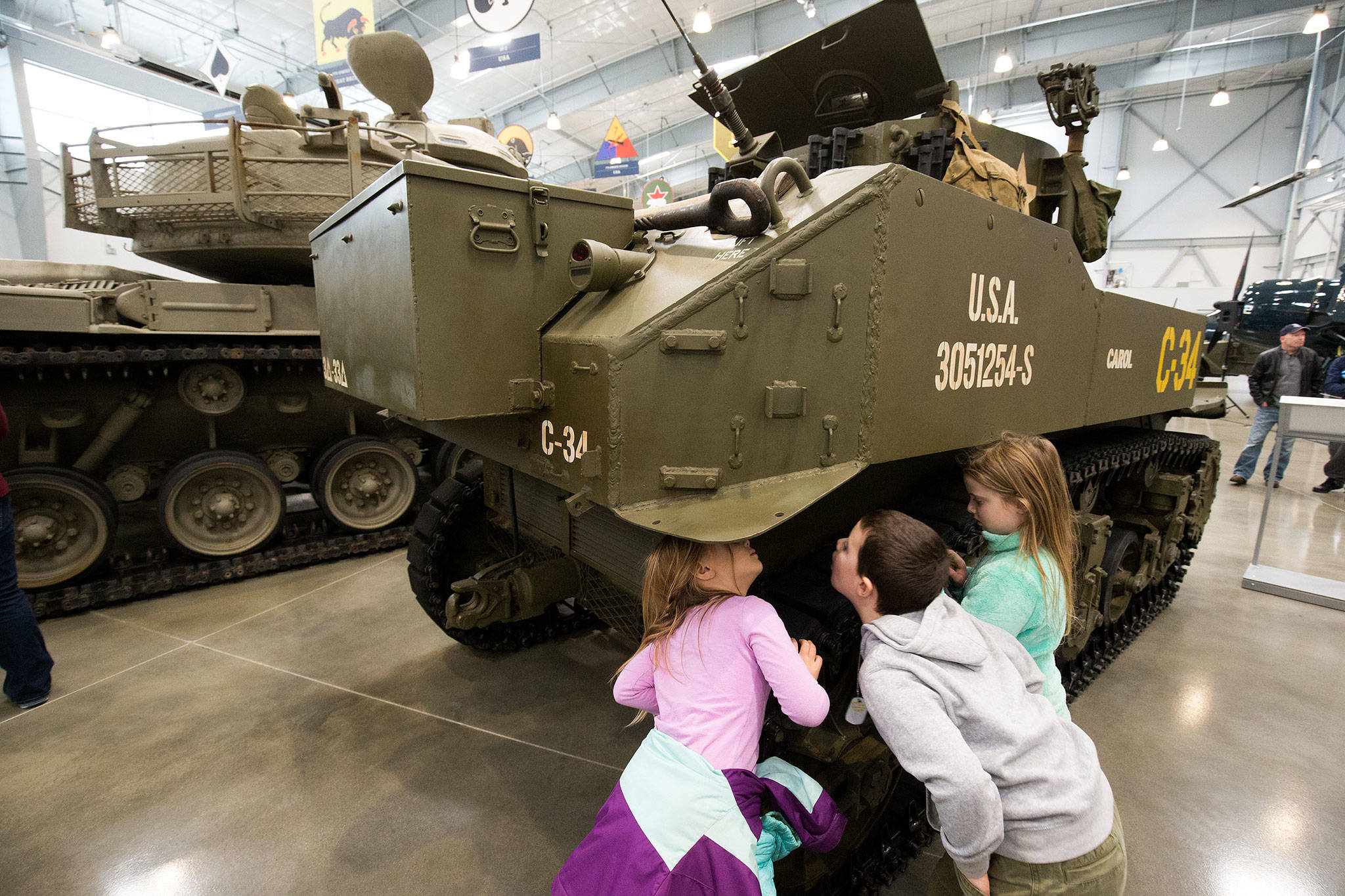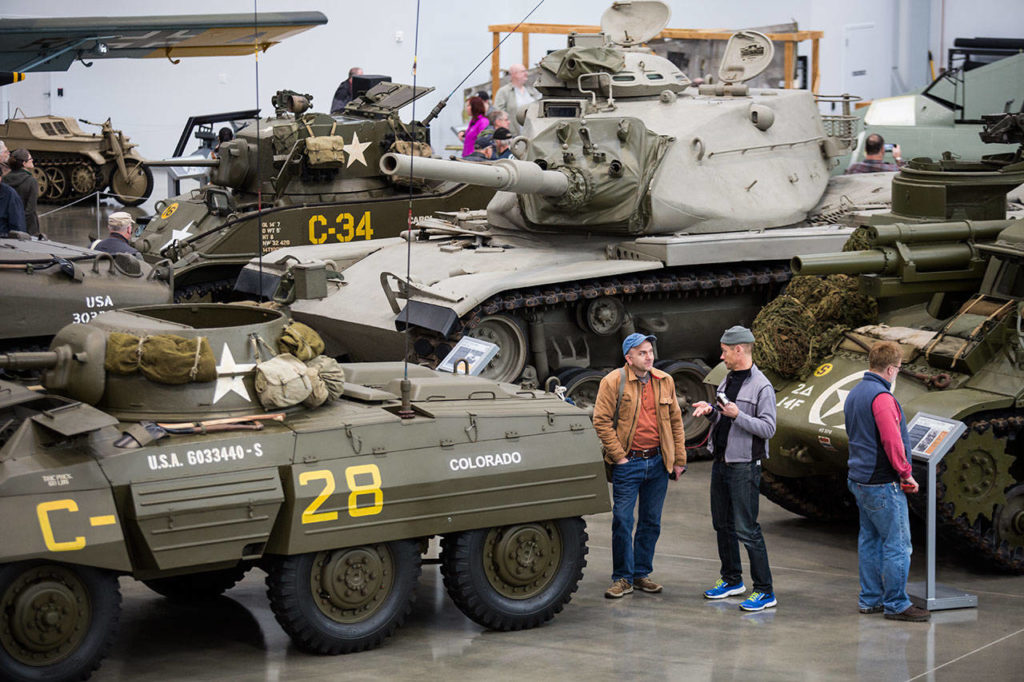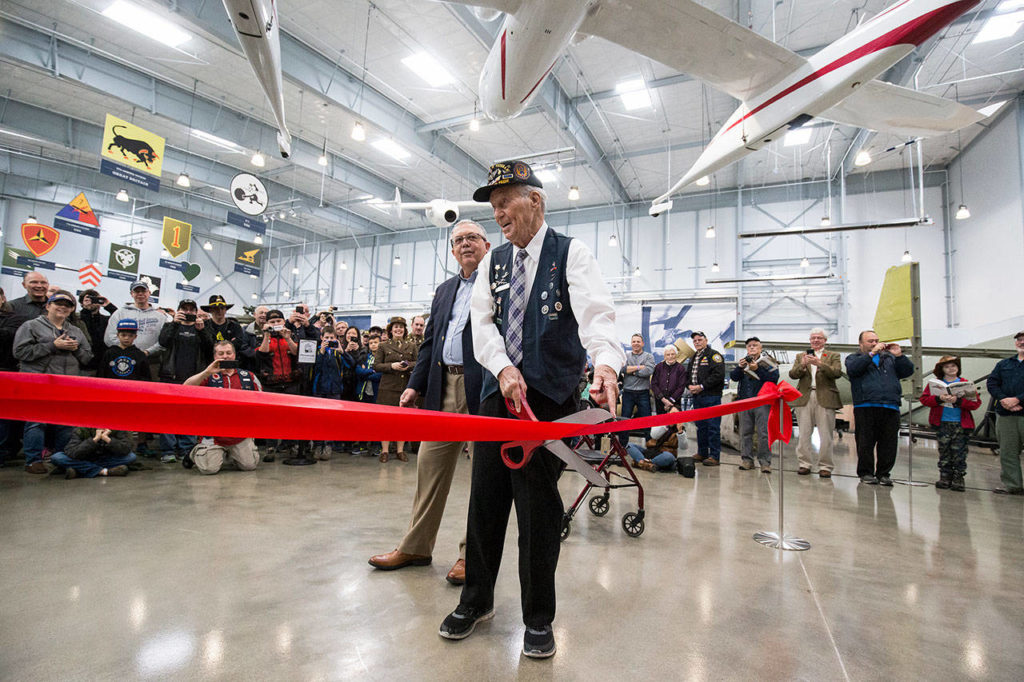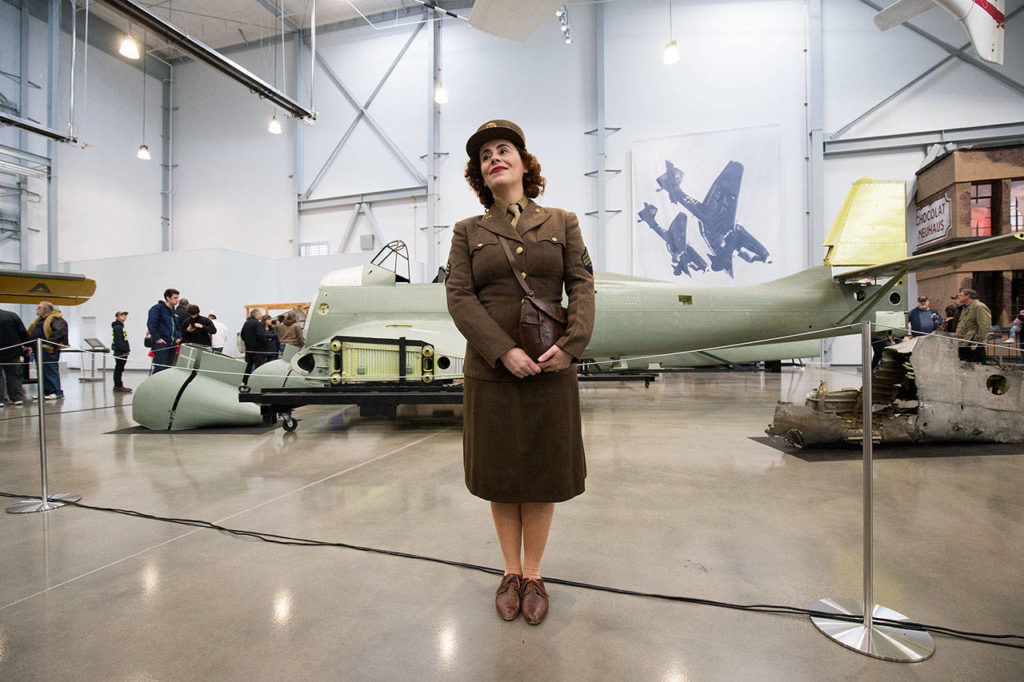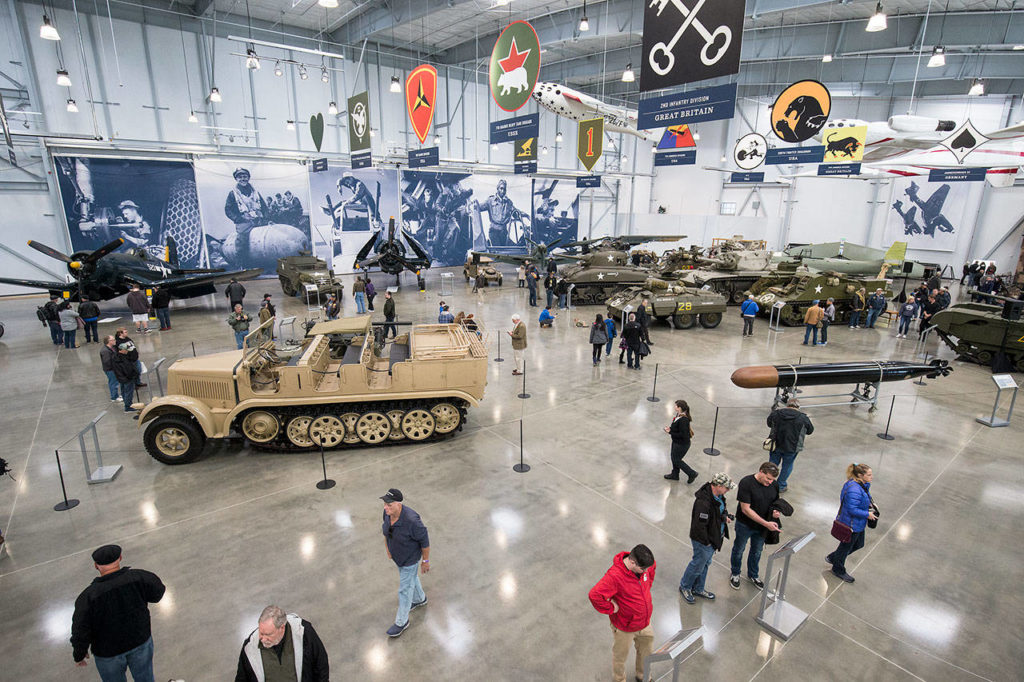EVERETT — In battle, the Junkers Ju 87 Stuka became propaganda fuel, an emblem of Nazi Germany’s ferocity and twisted innovations in human suffering.
Sirens screamed on the fixed landing gear when the dive bomber plummeted toward its target with such G-forces that German pilots often blacked out, only to be saved by the automatic underwing brakes.
One of three remaining Stukas on the planet resides at the Flying Heritage & Combat Armor Museum at Paine Field. Unveiled this month at the grand opening of a new display hangar, the Stuka is a refurbished fuselage without wings, wiring or engine.
It’s a reminder to grandchildren and great-grandchildren about the horrors of the past. In a better world, all of our weapons of war would be in museum halls.
The 30,000-square-foot expansion isn’t just about the stories of machines. It’s a modern history of humans.
“We’re trying to get more into the context of things, rather than just laying out a bunch of planes and tanks,” said Adrian Hunt, executive director. “We want you to think about the people, not just the planes, of the past.”
Over the past decade, that’s been the trajectory of Paul Allen’s museum at the south end of the airport. Recent additions to the rows of fighters and bombers are interactive exhibits about the causes of 20th century conflicts; a room dedicated to arguments for and against the atom bomb, with replicas of the original Fat Man and Little Boy; and videos of veterans recounting memories of combat.
Banners of soldiers’ faces — infantry riflemen, a black airman from the World War II era, a female Soviet sniper — adorn the new hangar, above exhibits about women in war, animals in war and a life-size diorama of a Belgian city destroyed in the Battle of the Bulge. And of course, there’s the Stuka and several newly restored, working tanks.
The expansion brings the total museum space to over two acres, or a bit smaller than your average Costco.
Allen was one of the world’s wealthiest history buffs. He died in October from complications related to non-Hodgkin lymphoma. The museum in Everett opened the new hangar weeks later, on Veterans Day weekend, just before the 100th anniversary of the 11th hour of the 11th day of the 11th month of 1918, when the First World War ended. Outside, a long line of people snaked from the entrance to the street. A ribbon was cut by B-17 gunner Staff Sgt. Art Unruh, of Arlington, on his 96th birthday.
Allen wanted these planes to look and fly exactly as they did in their heyday. Subtle monuments to the museum’s creator are scattered across the floor: In a framed photo in the original hangar, Allen poses in a cockpit, gazing skyward; in a breezeway, you can relive his deep sea searches for sunken military ships; dangling in the new building is White Knight, the launch craft that helped Allen’s team win the X Prize in 2004, pioneering private space flight.
The Microsoft co-founder, 65 when he died, took up hobbies like only a billionaire can. He owned a pro football team and a pro basketball team, sailed the seas on a super yacht with two helipads and amassed millions of dollars in guitars made legendary by Hendrix, Clapton and The Beatles. He left a $2 billion legacy of philanthropy, in art, science and education.
The future of Allen’s airplane collection is not in danger, Hunt said.
In-house mechanics have plans to restore the Stuka, for example, to flying condition by June 2020, with a Jumo 211 engine.
Once that’s done, it will be the world’s only airworthy Stuka.
The arms race of the 1940s spurred rapid advances in aviation, from biplanes to jet aircraft, in just a decade. A Stuka lumbering at a top speed of 200 mph grew vulnerable to far more agile Allied planes. Out of 5,000-plus that were built, one Stuka is on display in London, one is in Chicago and one is in Everett. The rest are scrap or lost. The wreckage of Everett’s long-range R-4 model was discovered in the icy wilderness of northwest Russia, hundreds of miles north of St. Petersburg, in the 1990s. It has been undergoing restoration in Hungary for five years.
Along with new displays, the Flying Heritage museum has refreshed its layout to let people walk right up to the tanks and artillery.
“These planes are very delicate — put a bit of chewing gum in the wrong place, or break the wrong thing, and somebody’s life’s at risk,” Hunt said. But the tanks? They’re built like — well, you know.
It’s one thing to read in a book about an M5A1 Stuart, a “light” tank at a mere 16.9 tons, with a 37mm cannon that was outgunned by German Panzers. It’s another thing to see a real one up close, to feel the cold metal and touch history.
Each piece is refurbished with care by a team of mechanics. The collection ranges from an early military Harley Davidson motorbike to one of the few privately owned Russian MiG 29 jet fighters in existence. Old canvas bags hang on the armored vehicles, in a nod to how they looked between battles.
“Most people think of a tank as a huge weapon,” Hunt said. “But five guys lived in that vehicle. It’s more like an RV. Your toothbrush, your toilet paper, everything came with you. (The crew) didn’t look glorious.”
Larry Knechtel, a retired United Airlines pilot, visits the museum every couple of months.
On summer Fly Days, he watches vintage warbirds take flight that he never thought he’d get to see — and basically in his backyard, too.
“I always feel like a blind dog in a meat shop in this place,” he said.
Jackson Ward, 15, of Bremerton, rode a ferry with his parents to see the new artillery. He’s most interested in the Churchill Mk VII Crocodile, a heavy British tank with a flamethrower that fired 120 yards.
“One thing I love about this place is if it drips oil, it runs,” he said. “The one thing I wish they had is a B-24. That’s what my great-grandfather flew in World War II. He was a top gunner.”
At the entrance to the new hangar is a tattered American flag in a display case, with a bullet shot through it, from the storming of Utah Beach at sunrise on D-Day. After the battle, a U.S. Navy boatswain lowered the flag, tucked it into a shoe box and raised a new one.
“So as dawn rose on June 6, that flag was on the landing craft,” Hunt said. “It’s not just a flag. It tells you a story.”
Caleb Hutton: 425-339-3454; chutton@heraldnet.com. Twitter: @snocaleb.
Find out more
Learn about the museum’s artifacts and admission cost at flyingheritage.org.
Open: Winter hours are 10 a.m. to 5 p.m., Tuesday to Sunday
Talk to us
> Give us your news tips.
> Send us a letter to the editor.
> More Herald contact information.
